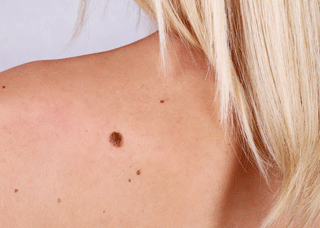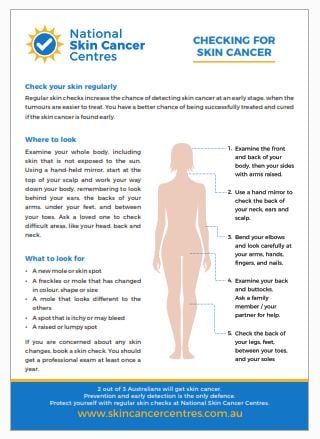Understanding Skin Cancer May Save Your Life

Do you know what skin cancer looks like? Skin cancer is the most common type of cancer, effecting two in three Australians. A variety of factors influence your chances of getting the disease, and it’s important to know what these risk factors are and what cancer looks like, as early diagnosis is the key to survival.
There are three major types of skin cancer: basal cell carcinoma, squamous cell carcinoma, and melanoma. The disease mostly results from ultraviolet radiation from the sun, which burns the skin and causes irreversible damage to the cells.
You are more prone to developing tumours if you have fair skin, a light complexion, freckles, blonde or red hair, blue or green eyes, a family history of melanoma, or a low immune system. Your likelihood of developing cancer increases as you get older, but it can still occur in young people. In fact, melanoma is the most common cancer in people 25 to 30 years old.
Basal cell carcinoma is the most common type of skin cancer. It arises primarily in sun-exposed areas like the face, nose, ears, shoulders, neck, scalp, forearms and hands. It commonly looks like a sore that won’t heal, but it can also appear as a growing spot. Basal cell carcinoma is usually treated successfully with minor surgery and rarely spreads beyond its original site.

Squamous cell carcinoma arises in the top layer of the skin in sun-exposed areas of the body. These cancers commonly appear as crusty growths and can be treated with freezing, surgery or topical chemotherapy.
Melanoma makes up less than one percent of all skin cancers, but causes nearly 100 percent of skin cancer deaths. These cancers arise from the pigment-producing cells of the skin. Melanomas can occur anywhere on the body and typically look asymmetrical (meaning they tend to have an irregular shape), have irregular borders, change colour (usually appearing very dark) and noticeably grow. Melanoma is best treated with surgery when found early, but can spread to other areas of the body, making it much harder to treat.
Protecting your skin from sun exposure reduces your risk of developing cancer. It’s important to monitor your skin for suspicious spots that are new, changing or failing to heal, and to get a regular professional skin check to detect tumours early.
To learn how to check your skin for suspicious spots, download the free resource.
